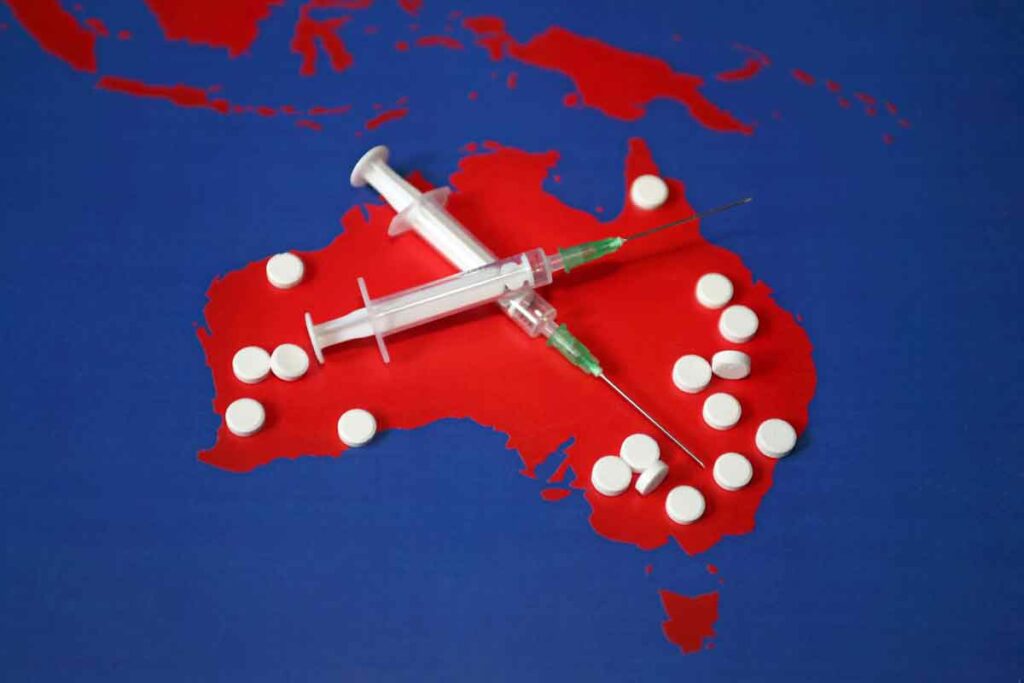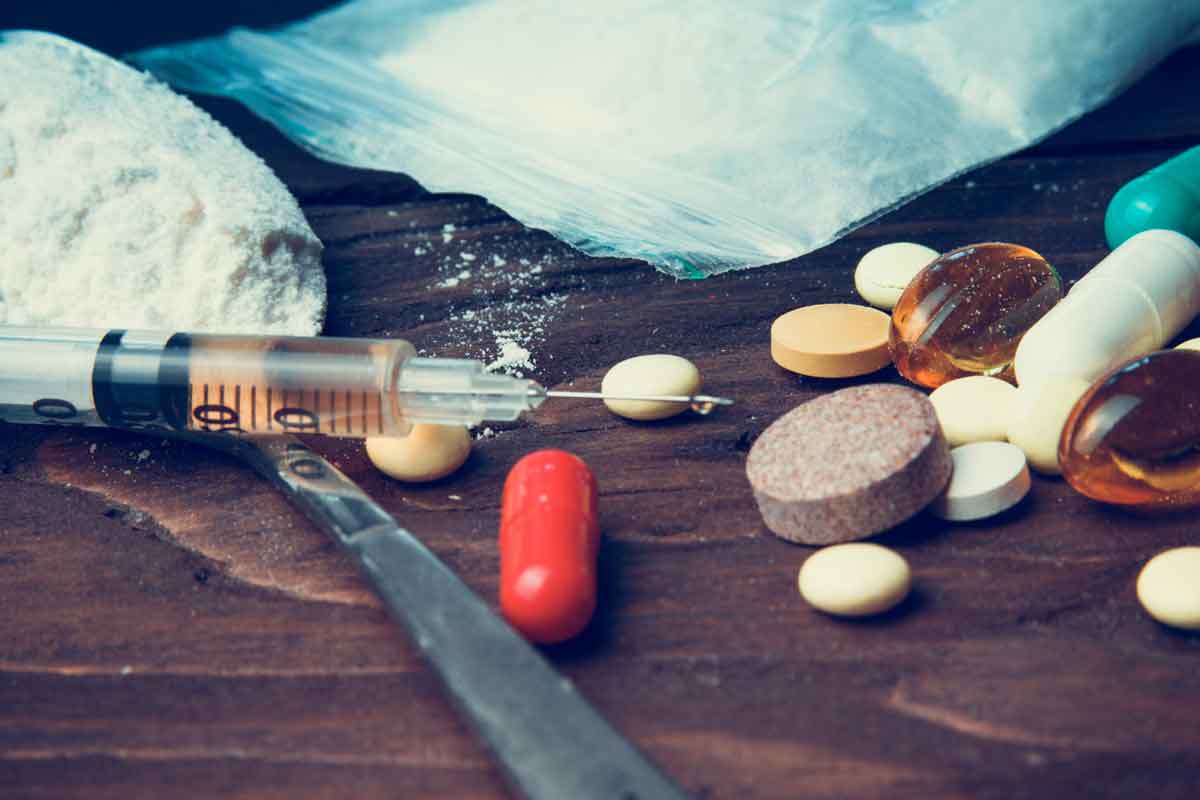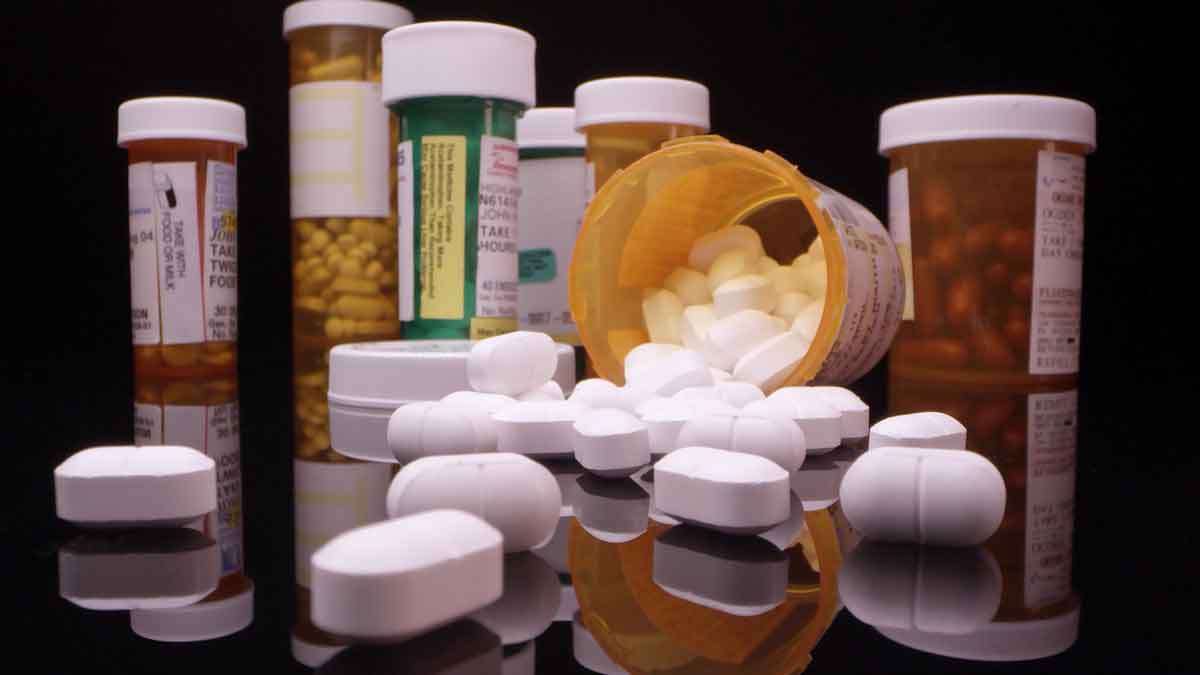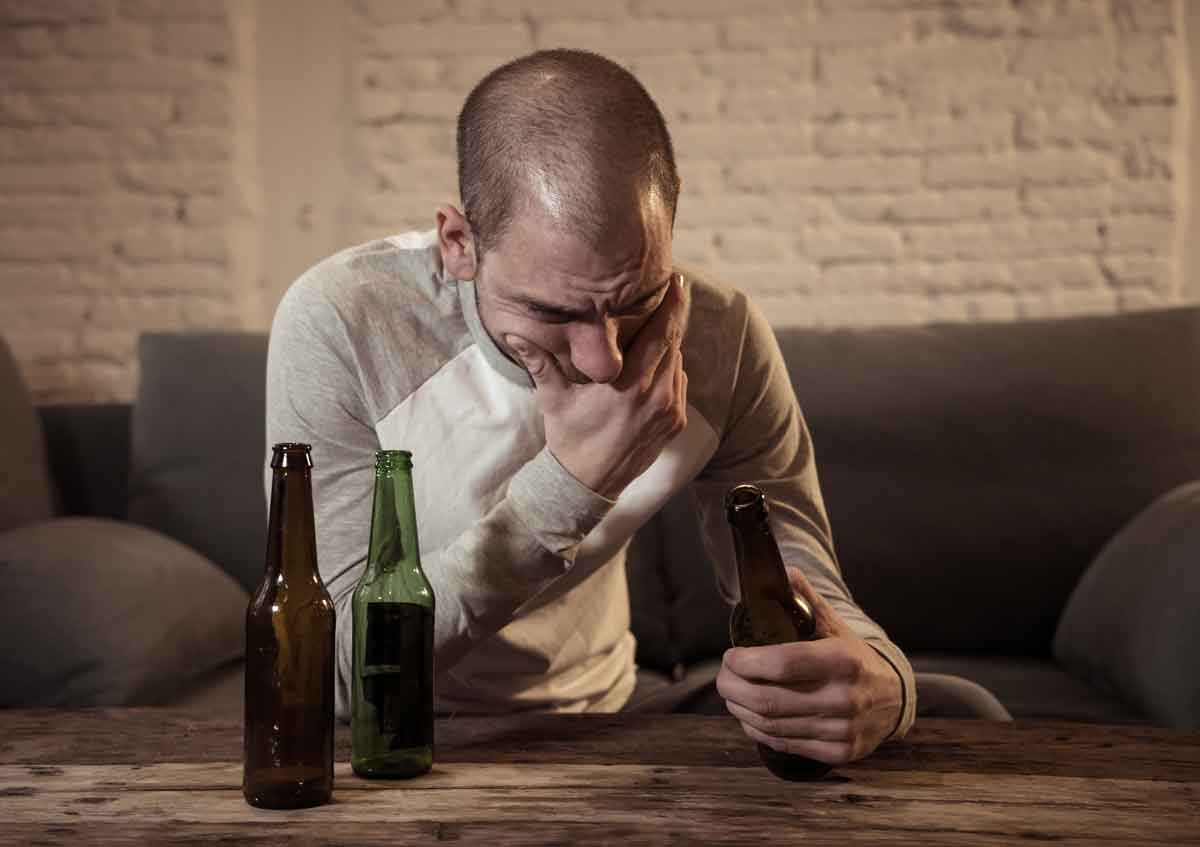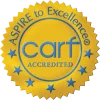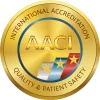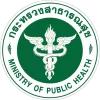Australia, as with many other countries, isn’t alone in facing a growing problem with addiction and mental health-related issues. Dealing with this growing crisis and the complexities of addiction and mental health is no small task. This guide provides an overview of addiction and mental health in Australia, supported by relevant statistics, resources, and the current state of treatment options available in the region.
As we explore these topics, we will discuss The Dawn, an internationally-accredited Rehab in Chiang Mai, as a viable solution for Australians needing help. Thailand is a popular destination for addiction recovery, with many Aussies taking advantage of the quality and cost-effective therapies available in the area. We will review this option in more depth as part of this guide.
We’ll offer guidance to Australians on locating support systems, receiving treatment, and making their mental health a priority.
The Prevalence of Addiction in Australia
But how bad is it? While it hasn’t reached as dramatic levels as in, say, some American states, the prevalence of addiction in Australia is still relatively high. According to the Australian Institute of Health and Welfare (AIHW), based on a 2019 survey, it is estimated that 43% of Australians aged 14 or over had illicitly used drugs or misused pharmaceuticals at some point in their lives and around 3.4 million or 16.4% had used an illicit drug in the previous year.
Though drug use doesn’t necessarily lead to addiction, these stats highlight how widespread it is in the country. While drug use is more common amongst younger people as compared to those aged over 50, it still stands that no age group is completely exempt from potentially developing an addiction.
The AIHW also studied alcohol consumption in Australia; alcohol accounted for nearly 3 out of 5 drug-related hospitalisations, with over 86,000 hospitalisations attributed to alcohol use in 2020–2021. They also found that almost half of Australians aged 14 years and over (47%) exceeded safe drinking guidelines in 2019-2020.
This shows that alcohol, while often socially accepted, is probably the biggest villain when it comes to addiction and mental health in Australia. Alcohol-related harm isn’t isolated to just physical symptoms – excessive drinking can have severe mental health effects, including depression.
Indigenous Australians have higher rates of alcohol use disorders and substance abuse – nearly double those found among non-Indigenous Australians. This highlights the need for more specific support systems around addiction and mental health within this community, which mainstream healthcare currently does not address adequately or at all.
Illicit Drug Addiction in Australia
Let’s narrow our focus on illicit drugs in Australia. Illicit drugs are those that won’t be prescribed by your GP. Essentially illicit drugs can be defined as substances that are illegal to possess, manufacture, or distribute.
The AIHW continues to be the go-to source for data on illicit drug use in Australia, confirming that there were 1,704 drug-induced deaths In 2021, with the number one killer being opiates (mainly heroin). Marijuana remains Australia’s most commonly used illicit drug, with cocaine and ecstasy second and third in prevalence, respectively.
Below is a list of common but far from exhaustive illicit drugs used in Australia:
Stimulants – Illicit substances that increase alertness, concentration, and energy levels are also referred to as “uppers.” However, despite the temporary benefits, these substances come with various dangerous side effects and the potential for addiction.
They Include:
- Cocaine
- Crack cocaine
- Amphetamines (Speed)
- Methamphetamine (Meth)
Depressants – or “downers” are substances that decrease the activity of the central nervous system. They can cause problems like impaired coordination, slowed breathing and even coma. They can also be highly addictive and dangerous when misused.
They Include:
- Barbiturates
- Benzodiazepines
Do note that there can be some crossover here between illicit and pharmaceutical drugs, with many being sold as street drugs.
Opioids – are a class of powerful drugs derived from opium or synthetically produced to mimic its effects. They include substances such as heroin, fentanyl, and various analogues. These drugs are known for their high potential for addiction, abuse, and life-threatening consequences.
Some opioids are produced illegally in clandestine labs using chemical processes to copy the key features of legitimate medications. But most commonly, prescriptions provide access to legally manufactured versions of common drugs.
- Heroin
- Fentanyl
- Oxycodone
- Hydrocodone
- Morphine
Hallucinogens – also known as Psychedelics- are drugs that alter a person’s perception, thoughts, and feelings, frequently causing vivid hallucinations or distorted sensory experiences. They come in various forms, including natural sources like magic mushrooms and synthetic compounds like LSD.
Hallucinogens are typically associated with counterculture and experimental subgroups seeking unique subjective adventures. Though not inherently damaging if taken responsibly and with full awareness of individual vulnerability toward adverse responses, sustained reckless indulgence carries risks depending on neurochemistry and overall predisposition.
- Lysergic acid diethylamide (LSD)
- Psilocybin mushrooms: (magic mushrooms, shrooms)
- Dimethyltryptamine (DMT)
Club Drugs – also considered “party drugs” due to their association with all-night music festivals or late-night partying. In short, club drugs are synthetically produced legal or illegal substances that produce energising effects.
These drugs have become popular among younger and recreational users, making them dangerously attractive to unsuspecting individuals unaware of the associated risks. Long-term use can lead to dependence and addiction in some cases.
- Methylenedioxymethamphetamine (MDMA, Ecstasy)
- Gamma-hydroxybutyrate (GHB)
- Rohypnol (Roofies)
- Ketamine
- Mephedrone (Meow Meow)
The eagle-eyed among you might have noticed that the one glaringly obvious and most common drug we haven’t discussed is cannabis. It’s not so easy a drug to label, especially with the advent of synthetic cannabinoids that are often much more potent than natural cannabis.
It can act as a hallucinogenic, a depressant and, in some cases, a stimulant, depending on the strain or a person’s individual response.
In general, cannabis is one of the least dangerous of all the drugs mentioned here, with the caveat that its negative effects are highly dependent on use patterns and levels of consumption. Cannabis is a Schedule 8 drug in Australia, so it can be prescribed by a doctor for certain medical conditions, though recreational use remains illegal.
Prescription Drug Addiction in Australia
Schedule 8 (S8) drugs are those considered to pose a high risk of abuse and dependence. In Australia, they’re only available via prescription from a doctor, who is required by law to record it on the patient’s medical file.
We can come at prescription drug abuse from two angles. Firstly misuse – this comes from a person taking their own prescription in ways that aren’t recommended or abusing another person’s prescription (such as sharing with friends). An example would be if someone is prescribed opioid painkillers for chronic backache and starts taking more than they’ve been told to get a better “high”.
The other angle is when people become addicted to prescription drugs without ever having had a legitimate prescription. Users may purchase commonly prescribed S8 drugs, such as opioids and benzodiazepines illicitly, on the black market.
Many prescribed drug users may not even be aware that they’re developing a dependency. They may start by trying to relieve pain but may unwittingly end up spiralling into addiction.
Some of the more abused prescription drugs often illicitly sold in Australia are Fentanyl, Oxycodone and Hydrocodone. These drugs are highly addictive even when taken as prescribed, but when taken recreationally, the risks of overdose and long-term health effects skyrocket.
In addition to these drugs, benzodiazepines are highly abused in Australia, often being combined with alcohol or other substances.
Take a look at these statistics – Australia witnessed 1,808 drug-induced deaths in 2016. Among these, benzodiazepines were identified in 663 drug-induced deaths, making it the most common single drug type. The remaining deaths (550) were attributed to other opioids, including prescription painkillers such as oxycodone, morphine, and codeine.
It goes to show just how serious prescription drug addiction can be in Australia.
Alcohol Addiction in Australia
Alcohol addiction is another serious problem plaguing Australians.
It’s no secret that drinking culture down under is deeply ingrained in society, whether it’s celebrating at sporting events or simply having a few drinks after work with colleagues. However, this normalisation of drinking has resulted in widespread abuse and subsequent addiction.
Many Australians will deny they have an alcohol addiction and continue drinking heavily, often citing that it’s “just a part of life”, underestimating the consequences of long-term alcohol abuse and failing to recognise how severe their problem has become until it’s too late.
The Australian Bureau of Statistics reported that in 2021, the number of alcohol-induced deaths reached 1,559, the highest it has been in the past ten years. Going by these numbers, it is clear that alcohol abuse is showing no signs of slowing down despite numerous prevention attempts.
Poly Drug Use
Using more than one drug at a time is known as polydrug use.
It’s a fairly broad term, and it can refer to combining drugs at the same time or segueing from one drug to another over a period of time.
The interactions between the different substances can be unpredictable and dangerous, setting a user up for numerous health problems or even overdose.
Polydrug use is challenging to treat because it requires simultaneously addressing multiple addictions.
Some users might not understand that mixing, for instance, alcohol with drugs like ecstasy or cocaine can be much more dangerous than using either on its own.
Some additives and preservatives found in street drugs increase the potency of certain substances when mixed together, and this is something that many polydrug users don’t consider before they get started.
Finally, some people may use drugs to counteract the effects of others, such as taking Benzos to come down from a stimulant high or using alcohol to help with opiate withdrawal symptoms.
Behavioural Addiction in Australia
In Australia’s digitally connected society, there is a growing concern about behavioural addiction.
Behavioural addiction (or process addiction) refers to the persistent and problematic involvement in an activity or behaviour despite negative consequences. Unlike substance addiction, there isn’t necessarily a physical dependency involved.
Common examples include sex addiction, gambling addiction, and internet addiction. Just as with their substance addiction counterparts, they can have severe negative effects such as relationship conflicts, financial strain, loss of employment opportunities, and declining mental health.
What’s often difficult to determine is when what could be deemed a harmless behaviour, hobby, or pastime escalates into something more destructive. The line that separates problematic behaviour and a full-blown addiction is, in many instances, a blurry one and not always easy to identify.
That said, there are certain indicators that could point towards the likelihood of an addiction developing. These include preoccupation with a certain activity, withdrawal symptoms when trying to reduce engagement in the behaviour, and a lack of control over usage patterns.
While behavioural and substance addiction might seem like two very distinct phenomena, the reasons and signs of addiction can often be similar. That is to say, a person may be struggling with underlying mental health issues or feel that the behaviour in question is helping them cope with life’s difficulties.
The Bidirectional Relationship Between Addiction and Mental Health Disorders
The path connecting addiction and mental health doesn’t just go in one direction. Addiction can be both the cause and effect of mental health problems, each exacerbating the other in what’s called a bidirectional relationship.
This bidirectional relationship can complicate the lives of individuals struggling with these dual diagnoses, making effective intervention and treatment all the more crucial.
Substance abuse alters brain chemistry and affects neural pathways, leading to the development or worsening of mental health issues. Inversely, mental health issues can increase the likelihood of substance abuse and addiction. Nevertheless, with early intervention and access to appropriate support, it is possible for individuals with dual diagnosis to experience successful long-term recovery outcomes.
Addiction & Mental Health Treatment Options in Australia
Inpatient Treatment Programs – also known as residential rehab programs, provide a structured environment where individuals can focus on their recovery. These programs typically last for a few weeks to several months and offer a range of services, including:
- Medical detoxification
- Individual and group therapy
- Medication management
- Holistic therapies (yoga, meditation, etc.)
- Aftercare planning
Outpatient Treatment Programs – allow individuals to continue living at home while attending therapy sessions and support groups. These programs can be more flexible and less intensive than inpatient treatment, making them suitable for those with work or family commitments. Services offered in outpatient programs may include:
- Individual and group therapy
- Medication management
- Relapse prevention education
- Support groups
Counselling and Therapy – can be an essential part of addiction and mental health treatment. There are several types of therapy available, including:
- Cognitive-behavioural therapy (CBT)
- Dialectical behaviour therapy (DBT)
- Family therapy
- Psychodynamic therapy
To find a qualified therapist in Australia, you can search the Australian Psychological Society’s Find a Psychologist directory or the Australian Counselling Association’s Find a Counsellor directory.
Medication-Assisted Treatment (MAT) – combines medication with counselling and behavioural therapies to treat substance use disorders. Some common medications used in MAT include:
- Methadone and buprenorphine for opioid addiction
- Disulfiram, naltrexone, and acamprosate for alcohol addiction
Support Groups – provide a safe space for individuals to share their experiences and receive encouragement from others facing similar challenges. Some popular support groups in Australia include:
- Alcoholics Anonymous (AA)
- Narcotics Anonymous (NA)
- SMART Recovery
- Beyond Blue (for depression and anxiety)
The Challenges of Rehab in Australia
There’s no denying that private rehab centres in Australia typically offer high-quality care, but this often comes at a price that many struggle to afford. The other option is to trust in the public healthcare system that, unfortunately, is burdened by limited resources and government funding, leaving public rehab centres stretched beyond their capacity.
Besides the financial aspect, another obstacle that Aussies face when accessing addiction treatment is long waiting lists for rehab centres. This can lead to delays in obtaining essential treatment, putting individuals at greater risk of relapse as they continue to face triggers and cravings while waiting for help.
Considering these barriers, as well as personal and societal factors, it’s not surprising that many Australians seek addiction treatment options overseas. Thailand has emerged as a popular choice for those struggling with addiction thanks to its affordable, top-quality treatment facilities and shorter waiting periods.
By choosing a rehab centre in Thailand, Australians, the stress of financial constraints and long wait times is no longer an issue; affordable and fast-track treatment is available.
The Dawn Rehab: A Holistic Solution for Australians Struggling with Addiction and Mental Health Issues
The Dawn Wellness Centre and Rehab Thailand, nestled in the serene outskirts of Chiang Mai, Thailand, offers a comprehensive and holistic approach to addiction and mental health treatment for Australians seeking help. This internationally accredited facility is distinguished by its unique combination of Western therapeutic techniques and traditional Asian practices, all at a fraction of the cost of comparable Western facilities.
Key Highlights:
- Affordable Treatment – The Dawn Rehab provides world-class care at only 1/3rd the price of Western facilities, making it a cost-effective choice for those seeking treatment.
- Comprehensive Approach – The centre incorporates Western therapeutic techniques, such as cognitive behavioural therapy and dialectical behaviour therapy, alongside the healing benefits of traditional Asian practices, like yoga, meditation, and mindfulness.
- International and National Accreditations – The Dawn is accredited by the American Accreditation Commission International (AACI) and the Thai Ministry of Public Health (MOPH), ensuring high standards of care.
- Tranquil Setting – Situated on the banks of the Ping River, the centre offers an oasis of calm, promoting a peaceful and supportive environment for recovery.
- 24-Hour Medical Care – The Dawn’s medical team is available around the clock to address any medical concerns and provide the necessary support.
- Onsite Detox – The centre provides a safe and comfortable detoxification process supervised by experienced medical professionals.
- Intimate Environment – With a cap of 35 residents, The Dawn ensures personalised attention and tailored treatment plans for each individual.
- Western Trained Clinical Team – The centre’s clinical staff is comprised of professionals with Western education and training, ensuring the highest quality of care.
- Relapse Warranty Policy – The Dawn offers a unique relapse warranty, allowing clients who complete 12 weeks of primary treatment and relapse within a year to return for 28 days at no additional cost.
- Trauma-Informed Care – The centre specialises in treating unresolved trauma, a common underlying cause of addiction, through evidence-based therapeutic interventions.
- TMS Therapy -The Dawn offers cutting-edge Transcranial Magnetic Stimulation (TMS) therapy, a non-invasive and innovative treatment option for various mental health conditions. The Dawn is the only rehab facility in Asia or Australia to offer onsite TMS treatment.
The Dawn’s unique approach to addiction and mental health treatment is anchored in a two-pillar strategy designed to ensure comprehensive and lasting recovery for clients – Evidence-based Western Psychotherapy and Eastern-based Holistic Healing.
By seamlessly combining these two pillars, we can offer the most well-rounded treatment experience for overcoming addiction and mental health challenges. Ultimately paving the way for a successful and lasting recovery.
Why Australians Choose The Dawn
The Dawn Wellness Centre and Rehab Thailand offers a unique and highly effective approach to addiction treatment, combining evidence-based practices with a serene and supportive environment.
Our personalised, holistic approach to treatment addresses each client’s unique needs, and our focus on trauma-informed care and dual diagnosis ensures that underlying mental health issues are effectively addressed.
For Australians seeking comprehensive and compassionate care for addiction and mental health, The Dawn is an excellent choice for achieving lasting recovery and improved well-being.
Closing Thoughts
Addiction is a significant issue in Australia that affects individuals of all ages and walks of life.
While illicit drug use remains a significant concern, prescription and alcohol abuse are also major contributors to addiction rates. The bidirectional relationship between addiction and mental health disorders further complicates matters. It underscores the importance of addressing underlying issues such as trauma, anxiety or depression when treating addiction. Moreover, it highlights the need for more comprehensive approaches towards treatment.
Tired of battling financial constraints, long waiting lists, and limited treatment options in Australia?
Discover a world of healing and rejuvenation at The Dawn, where affordable, top-quality care and shorter waiting periods await.
Take the leap towards a brighter future and embrace our two-pillar approach to addiction and mental health treatment.
Resources and Support for Australians
- SMART Recovery Australia
Self-help program for addiction recovery, including support groups and tools. - Mental Health Australia
The peak body representing mental health organisations and individuals in Australia, advocating for better mental health services. - Alcoholics Anonymous (AA) Australia
A 12-step program for people recovering from alcohol addiction. - Narcotics Anonymous (NA) Australia
A 12-step program for people recovering from drug addiction. - Beyond Blue
Information and support for anxiety, depression, and suicide prevention. - Black Dog Institute
Information, research, and support for mood disorders like depression and bipolar disorder. - Lifeline Australia
24/7 crisis support and suicide prevention services. - Mind Australia
Mental health services and support for people with mental health issues and their families. - Alcohol and Drug Foundation
Information, resources, and support for individuals and communities to prevent and reduce alcohol and drug-related harm. - Family Drug Support (FDS)
Support and resources for families and friends of individuals struggling with drug and alcohol issues. - Australian Drug Information Network (ADIN)
A comprehensive search engine providing access to Australian drug and alcohol information, research, and services. - National Drug and Alcohol Research Centre (NDARC)
A leading research institution focusing on drug and alcohol issues in Australia, providing evidence-based information and resources.
Related Posts
 Drug Addiction Problems in Australia
Substance addiction and abuse might be global problems, but few developed countries have struggled with them as much as Australia. According to recent reports, around 1 in 20 Australians struggle...
Drug Addiction Problems in Australia
Substance addiction and abuse might be global problems, but few developed countries have struggled with them as much as Australia. According to recent reports, around 1 in 20 Australians struggle...
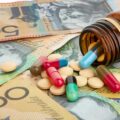 Addiction Problems in Australia
Addiction is a growing problem all over the world, and Australia is no exception to this trend. Documented cases of substance and behavioural addiction continue to grow with each year,...
Addiction Problems in Australia
Addiction is a growing problem all over the world, and Australia is no exception to this trend. Documented cases of substance and behavioural addiction continue to grow with each year,...
 Guide to Addiction Treatment Abroad for Australians
Although addiction remains a major concern in Australia, more Australians have begun to seek professional help battling their problem. And what might be surprising is that most of these treatment-seeking...
Guide to Addiction Treatment Abroad for Australians
Although addiction remains a major concern in Australia, more Australians have begun to seek professional help battling their problem. And what might be surprising is that most of these treatment-seeking...
 The Cost of Addiction Treatment in Australia
Addiction is a complex illness that affects millions of people globally, including Australians. It can have devastating effects on individuals and their families, including physical, emotional, social, and financial consequences....
The Cost of Addiction Treatment in Australia
Addiction is a complex illness that affects millions of people globally, including Australians. It can have devastating effects on individuals and their families, including physical, emotional, social, and financial consequences....

